Introduction to Norse Mythology
Norse mythology and legends probably have one of the vaguest origins of some of the renowned mythologies from history. Their primary lore is borrowed from a patchwork of oral traditions and local tales that were conceived in both pre-Christian ancient Germania and early medieval Scandinavia.
Many of these various stories were collected and compiled in manuscripts (comprising Old Norse texts), in 13th-century Iceland. One of these important Old Norse works of literature comprises the Prose Edda, presumed to be written by the Icelandic historian Snorri Sturluson, circa 1220 AD.
Another crucial Old Norse literary work comprises the Poetic Edda. As its name suggests, the compilation consists of poems dating from circa 1000 – 1300, with most of the collections (and their variant versions) containing text from the Codex Regius (Royal Book), an Icelandic medieval manuscript dating from 1270.
One of the best examples of some early medieval influences on Norse mythology relates to the narrative of the Æsir–Vanir War, whereby two different pantheons (representing the Æsir and Vanir tribes of Norse gods) are merged into a singular literary scope.
However, Norse mythology should also be perceived as a reflection of the impartial views of Germanic people on nature, enchantment, and magic – as opposed to later reactive myths that tend to ‘correct’ both the behavior of deities and humans. So without further ado, let us take a gander at fifteen major Norse gods and goddesses you should know about.
Contents
- Introduction to Norse Mythology
- Ymir – The Ancestor of Giants
- Odin – The King of the Aesir Gods
- Frigg – The Queen of the Aesir Gods
- Thor – The Loyal Defender of Asgard
- Balder – The God of Light and Purity
- Vidar – The Silent God of Vengeance
- Tyr – The God of War
- Bragi – The ‘Bard’ God of Asgard
- Idun – The Youthful Goddess of Rejuvenation
- Loki – The Trickster God
- Hel – The Ruler of the Underworld
- Heimdall – The Vigilant Guardian of Asgard
- Njord – The God of Seas and Wealth
- Freyr – The God of Fertility
- Freya – The Goddess of Fate and Destiny
- The Family Tree of Norse Gods and Goddesses
Ymir – The Ancestor of Giants
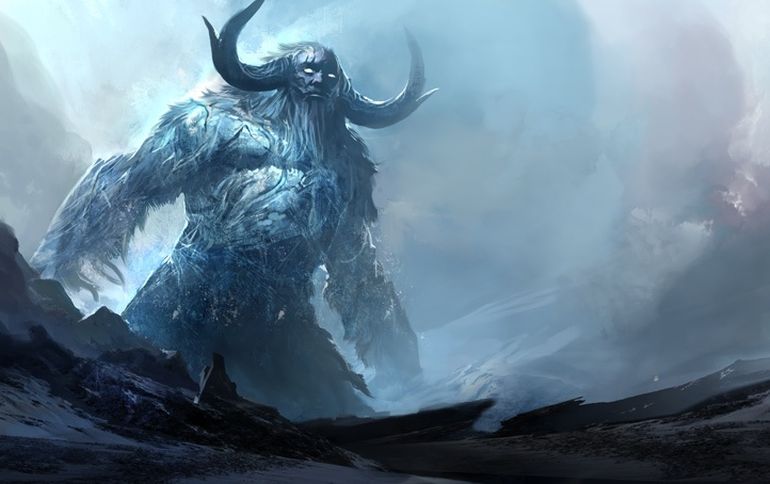
Like with most mythologies, including Mesopotamian and Egyptian, the Norse pantheon had its primeval entity in the form of Ymir, the ancestor of all jötnar (mythic entities that ranged from giants to other fantastical creatures).
Ymir was perceived more as the ‘first being’, as opposed to a strict categorization as one of the Norse deities. He was created by the ice of Niflheim combined with the heat of Muspelheim, long before the existence of the Earth. And after his own genesis, Ymir, with his hermaphroditic body, was responsible for birthing male, female, and other mythical beings, who in turn would go on to bear future generations.
The narrative of Ymir also took a tragic turn, much like the other primeval deities of ancient mythologies. To that end, he was given an ill-fated ending due to his apparent evil machinations.
To that end, Buri (created after Ymir), often acknowledged as the first of the Norse deities, had a son named Bor, who finally married one of Ymir’s descendants Bestla, and their union produced three sons – Ve, Vili, and Odin. But the angry Ymir confronted these ascending young gods, which eventually led to his own death at the hands of the three brothers.
The three Norse gods, including Odin, then proceeded on to create the entire earth (much like the Mesopotamian Marduk) from Ymir’s fallen body, with his blood accounting for the seas and oceans, while his bones made up the rocks and mountains.
Furthermore, his hair was used for the trees, his skull was transformed into the sky and heavens, and his brains were made into clouds. And finally, his eyebrows were fashioned into the Midgard – the ‘middle realm’ or earth of mankind.
Odin – The King of the Aesir Gods
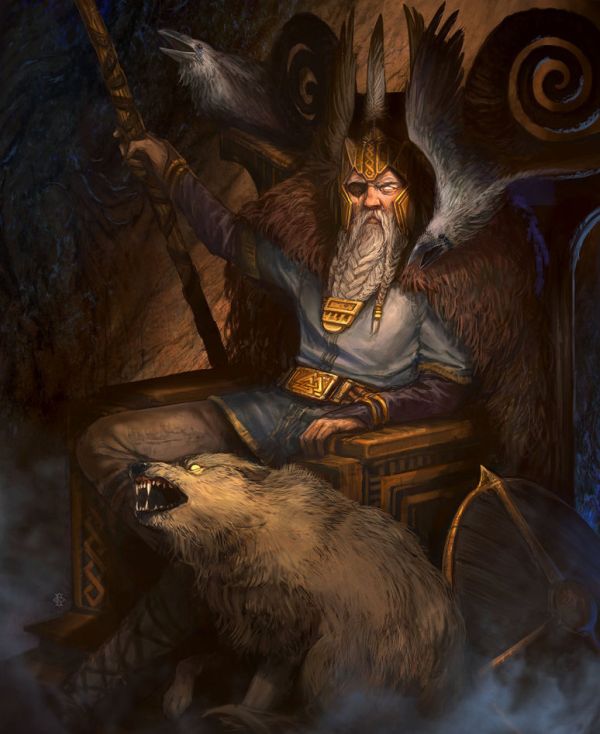
Odin (Óðinn in Old Norse), possibly the most revered yet enigmatic of all Norse gods, was regarded as the king of the Æsir tribe of gods – thus making him akin to the supreme god. Historically, Odin had always been prominent in the pantheon of Germanic mythology, as is evident from Tacitus’ late 1st-century AD work Germania (where Odin is seen as the equivalent of the Roman god Mercury).
And given his mythical eminence over the cultural framework of the Germanic people, Odin was associated with various (and often antithetical) aspects, ranging from wisdom, healing, and royalty to death, sorcery, and even frenzy.
Interestingly enough, the character of Odin was often portrayed as the haggard wanderer who relentlessly seeks knowledge, in spite of his regal status as the ruler of Asgard. Such ‘contradictory’ portrayals mirrored his nature of (and quest for) wisdom.
One of these stories talks about the deity’s thirst for knowledge and wisdom. In the story, Odin willingly gouges out one of his own eyes as a sacrifice for Mimir, a shadowy being who possesses unparalleled knowledge because of its consumption of the water from the Well of Urd. Mimir in return offers Odin a draught from the well that draws water from the roots of the Yggdrasil, the cosmic world tree that binds the nine worlds of Norse mythology.
On the other hand, the one-eyed Odin also has a sinister (albeit on a nascent level) side to him. On some occasions, Odin is easily provoked which leads to disastrous conflicts and wars. Essentially, when perceived as a war god, Odin was seen as the epitome of battle frenzy and chaos – aspects that were favored by the warlords and berserkers.
Frigg – The Queen of the Aesir Gods
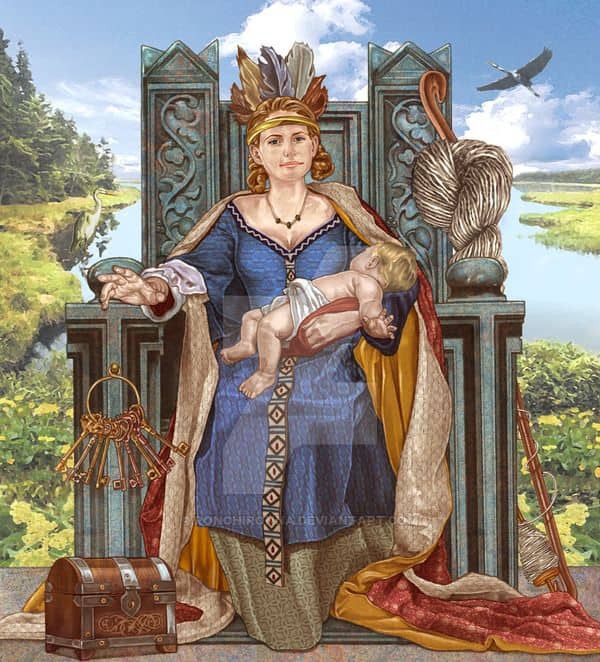
Frigg was regarded as the Queen of the Æsir and the goddess of the sky – thus possibly venerated as the foremost of all Norse goddesses when it came to their pantheon. Moreover, Frigg, with her power of foreknowledge, was also frequently associated with fertility, household, motherhood, marriage, and even domestic matters. Also with her special status as Odin’s wife, it was the mythic aspects of Frigg that were mostly related to the perceived bliss of family life.
On the other hand, Frigg’s love for family and motherly protectiveness also leads to the tragic episode of her favored child Balder’s death (discussed later). Interestingly enough, in spite of Frigg’s eminence in later Norse mythology (during the Viking period), her Old Germanic version is steeped in mystery – a factor that is still debated in the academic world.
Pertaining to the latter, according to one of the origin-based hypotheses, Mother Frigg was possibly identified with the goddess Freyja (who is discussed later in the article) during the Proto-Germanic period. But as scholar Stephan Grundy mentioned in his book The Concept of the Goddess –
The problem of whether Frigg or Freyja may have been a single goddess originally is a difficult one, made more so by the scantiness of pre-Viking Age references to Germanic goddesses, and the diverse quality of the sources. The best that can be done is to survey the arguments for and against their identity and to see how well each can be supported.
Thor – The Loyal Defender of Asgard
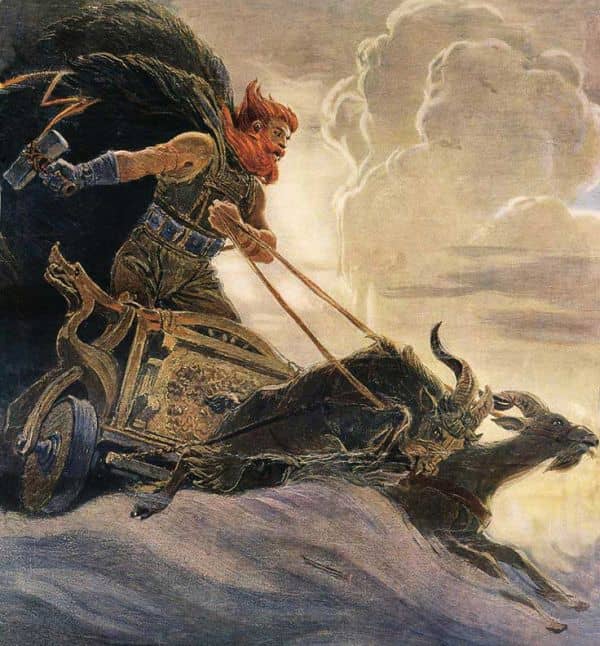
Thor (Þórr in Old Norse), the god of thunder, with his burly might and boisterous ways, epitomized the formidable warrior who was accorded high status in the Germanic society of ancient and early medieval times.
Regarded as the son of Odin and his wife Fjörgyn (not to be confused with Frigg), Thor, with his red beard and eyes, was hailed as the loyal and stalwart defender of the Æsir’s stronghold of Asgard, thus suggesting his symbolic role as the protector of the ordered cosmos.
Suffice it to say, according to Poetic Edda, Thor, the thunder god, was considered the strongest of all beings among both gods and men. And his strength was rather ‘amplified’ by some of his specially-crafted apparel, including his iron gloves and the belt of Megingjard (or megingjarðar in Old Norse).
But, like comic books and popular culture tout, the most common item associated with Thor undoubtedly pertains to the dwarf-crafted hammer Mjöllnir (roughly translated to ‘lightning’), thus alluding to how thunder was perceived (by the pre-Christianity era Norsemen) as the result of Thor striking his hammer, presumably when slaying giants and monsters while riding his chariot drawn by two giant goats – Tanngniost and Tanngrisnir.
Interestingly enough, Thor was also regarded as the god of agriculture, fertility, and hallowing. Pertaining to the former, this aspect was probably an extension of Thor’s role as a sky god who was also responsible for rain.
To that end, Thor’s wife Sif and her golden hair possibly symbolized the fields of grain, and thus their union embodied the fruitfulness and verdancy of the lands. As for our modern context, ‘Thursday’ is derived from Old English þurresdæg, a contraction (possibly influenced by Old Norse þorsdagr) of þunresdæg, which literally means “Thor’s day”.
Balder – The God of Light and Purity
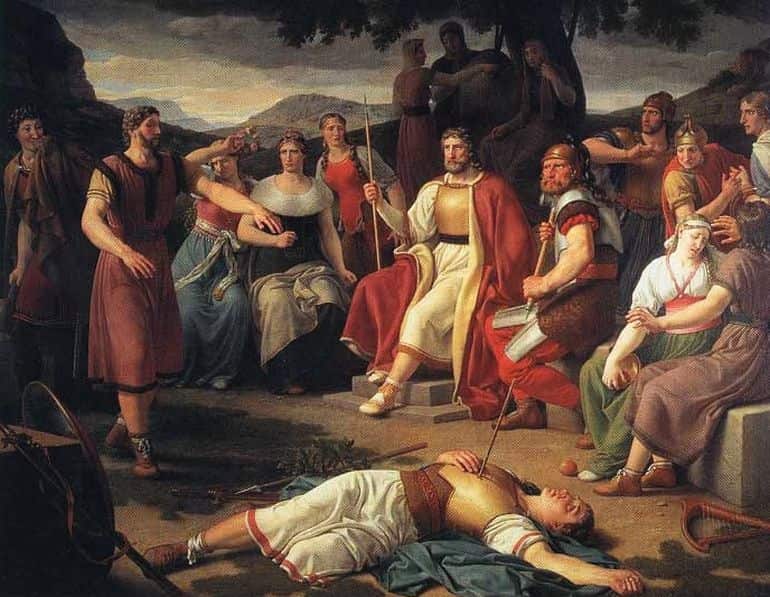
Balder, or Baldur (Baldr in Old Norse), the younger son of Odin and Frigg, and half-brother of Thor, was regarded as the Æsir god of light and purity, He epitomized the effulgent summer sun itself. Balder was also hailed as a fair, wise, and gracious divine being whose beauty even abashed the elegant flowers before him.
Matching his physical attributes, his abode Breidablik in Asgard was considered the most exquisite of all halls in the stronghold of the Norse gods, flaunting its gilded silver components and embellished pillars that only allowed the purest of hearts to enter. Icelandic scholar Snorri Sturluson wrote –
There is nothing but good to be told of him. He is the best of them and everyone sings his praises. He is so fair of face and bright that a splendor radiates from him, and there is a flower so white that it is likened to Balder’s brow; it is the whitest of all flowers.
From that, you can tell how beautiful his body is, and how bright his hair is. He is the wisest of gods, the sweetest-spoken, and the most merciful, but it is a characteristic of his that once he has pronounced a judgment it can never be altered.
Balder, among all the gods, also possessed the greatest ship ever built, Hringhorni, which was later used as the funeral pyre after the god’s tragic death. Relating to this deplorable incident, Balder was mistakenly killed by Höðr, Balder’s twin brother, who was blind.
Höðr was presented with a dart made of mistletoe by the cunning Loki, who knew that Balder was impervious to all living elements on the face of Asgard and Midgard, except for the seemingly harmless mistletoe. That is because Frigg, Balder’s mother, missed the mistletoe when making a plea to most living things when it came to causing no harm to her delicate son.
So the dart – thrown jokingly at Balder (as was the habit among the many Asgardian gods), directly pierced his heart and slew him, instead of bouncing off the god. Consequently, many of the grief-stricken Norse gods even tried to bring back Balder from the domain of Hel, but to no avail, and thus the wise god was lost to them on account of Loki’s cruel prank.
Vidar – The Silent God of Vengeance
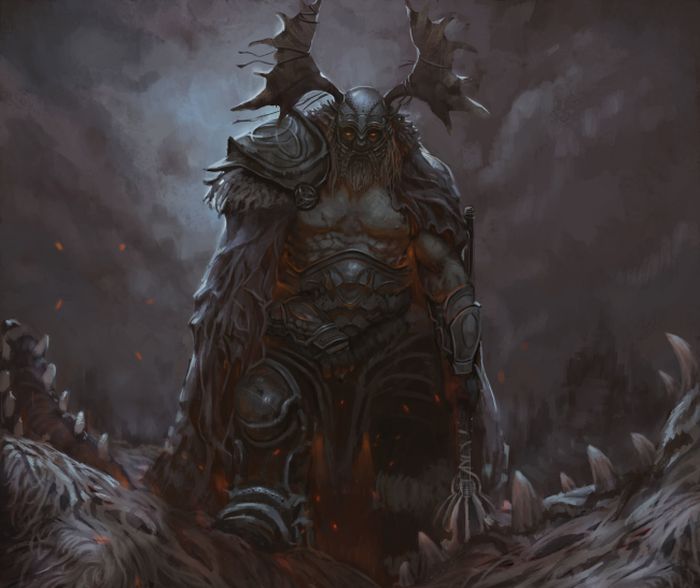
Vidar (or Víðarr in Old Norse, possibly translated to ‘wide ruler’) was one of Odin’s sons and the jötunn Grid (or Gríðr) – and he was often represented as the ‘silent’ god of vengeance. With his name attested in the Poetic Edda, his association with vengeance probably stems from the foretelling of how he would avenge his father’s (Odin’s) death by killing the ferocious Fenrir, the monstrous wolf, at the Ragnarok.
Incredibly enough, he is also counted among the very few major Norse gods who would survive the final conflict (and “thereafter dwell on the field of Idavoll”).
In Gylfaginning (the first part of Poetic Edda), Vidar is mentioned to wear a thick shoe (like Thor) which is constantly mended by the god himself. That is because the shoe would keep Vidar relatively safe as he plunges his foot down Fenrir’s throat to smash the monster’s heart at the Ragnarok (although Völuspá mentions how Vidar would slay Fenrir by thrusting his sword into the wolf’s heart).
To that end, there might have been a tradition among the Norse shoemakers to keep (or dedicate) little scraps of leather from the trimmings of their shoes to aid the Silent God of Vengeance.
As for his attribute of silence, it might have to do with the ritual of vengeance which subjected warriors to periods of silence, possibly as a means of focusing or as part of the rites of purification. In that regard, the powerful god Vidar was said to be almost as strong as Thor, but not particularly as boisterous as his renowned half-brother.
Interestingly enough, in terms of etymology and history, Georges Dumézil hypothesized how the figure of Vidar – the son of Odin, evolved from an Indo-European cosmic entity related to spaces or realms, much like Vishnu from Hindu mythology.
Tyr – The God of War
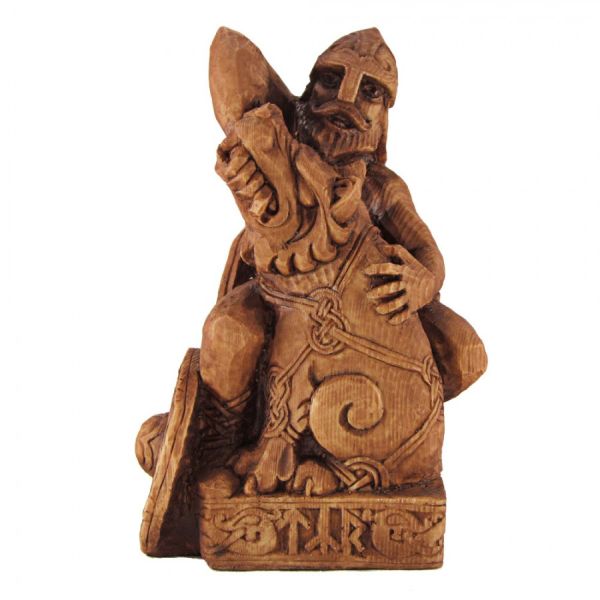
Tyr (or Týr in Old Norse), the deity of war and heroic glory, was regarded as the bravest of the Norse gods of the Germanic people. And in spite of his association with wars – more specifically the formalities of conflict, including treaties, his origins are rather enigmatic, with the deity possibly being one the oldest and most important gods of the ancient Germanic pantheon.
That is until he was supplanted by Odin (many myths declare Tyr as a son of Odin, while other stories place Tyr as the son of the giant Hymir). In any case, since some of the aspects of Tyr related to formalities, the god was also hailed as the deity of justice and oaths.
Tyr was often depicted as the one-handed god since his limb was bitten off by the monstrous wolf Fenrir when the god tried to trap the creature (and Fenrir was thus successfully bound till Ragnarok due to the sacrifice of Tyr). In spite of this episode, Tyr is foretold to be slain by Garm, the guard dog of Hel, as opposed to Fenrir (according to the prose version of Ragnarök).
And like some other Norse gods, Tyr also has significance in our modern-day context. In that regard, the Old English variant of his name is Tiw, and he was associated with Mars by the Romans, and thus dies Marti (Mars’ Day) came to be known as tiwesdæg (Tuesday).
Bragi – The ‘Bard’ God of Asgard
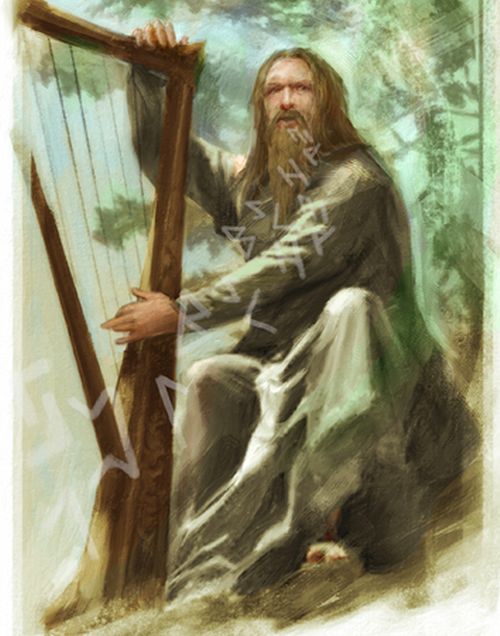
Bragi (which roughly translates to ‘Poet’ in Old Norse), often considered the skaldic god of poetry in Norse mythology, pertains to a unique mythical character who possibly shared traits with the historical 9th-century bard Bragi Boddason.
Boddason himself might have served in the courts of Ragnar Lodbrok and Björn at Hauge. In any case, when it came to legends, the god Bragi was perceived as the bard of Valhalla, the magnificent hall of Odin where all the fallen heroes and warriors are gathered for the ultimate ‘showdown’ at Ragnarok.
To that end, Bragi was hailed as the skillful poet-god who sang and delighted the hordes of the Einherjar (warriors who died in battles and were brought to Odin’s majestic hall by the Valkyries). Snorri Sturluson wrote (in Gylfaginning) –
One is called Bragi: he is renowned for wisdom, and most of all for fluency of speech and skill with words. He knows most of skaldship, and after him skaldship is called bragr, and from his name that one is called bragr-man or -woman, who possesses eloquence surpassing others, of women or of men. His wife is Iðunn [Norse goddess associated with apples and youth.]
As for the Norse god’s historical counterparts, there are a few candidates other than Bragi Boddason mentioned in various Poetic Edda pieces. The names include Bragi son of Hálfdan the Old (mentioned in Skjáldskaparmál) and Bragi Högnason (mentioned in the second part of Helgakviða Hundingsbana).
Idun – The Youthful Goddess of Rejuvenation
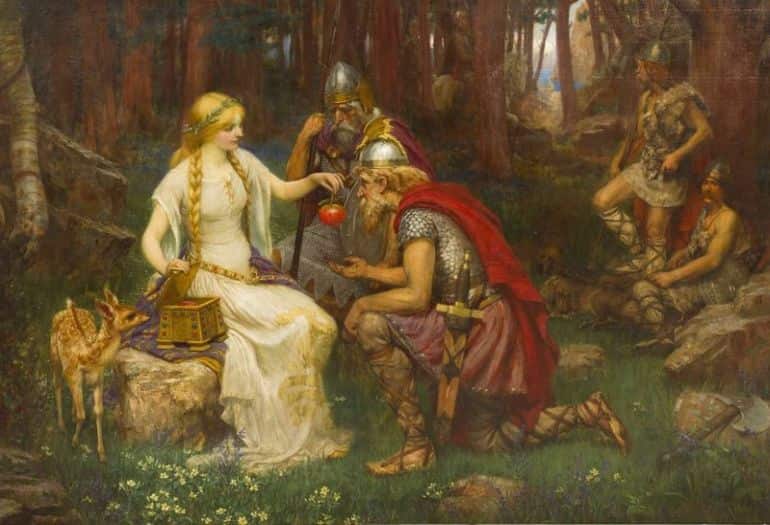
Idun (or Iðunn in Old Norse, meaning ‘Rejuvenating One’) belonged to the Aesir tribe of Norse gods, and as such, was considered the Norse goddess of eternal youthfulness. This aspect was represented by her strikingly exuberant long golden hair. In the mythical narrative, she is also mentioned as being the wife of Bragi, the court poet of Asgard.
However, beyond her personal attributes, it was the latent power she held that is arguably more interesting to myth lovers. To that end, Idun was said to possess fruits (epli – sometimes designated as golden apples) that endow immortality, as mentioned in both Haustlöng and the Prose Edda.
In essence, her fruits are the ‘fuel’ that sustains the immortality of the Asgard dwellers, thereby making her a crucial member of the Norse gods. Another vague myth also relates to how she is accused of cheating by none other than Loki – but we don’t know the outcome of such allegations given the scarcity of sources.
Loki – The Trickster God
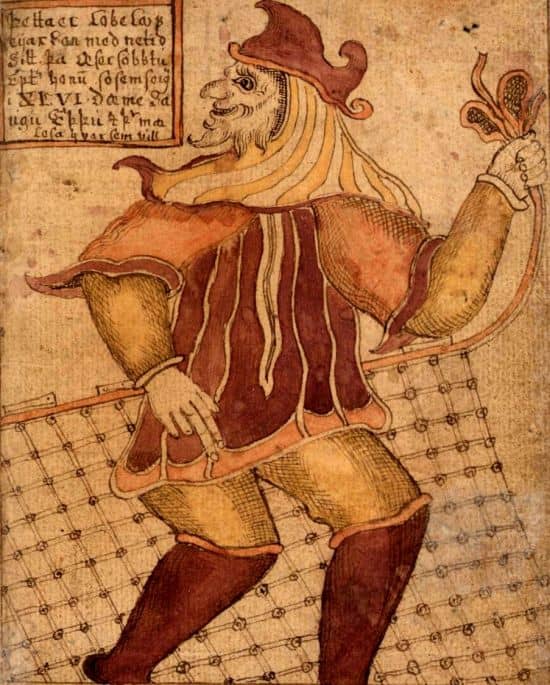
Loki is regarded as the trickster among the Norse gods – represented as having qualities somewhat akin to the chaotic aspects of the ancient Egyptian god Set. Interestingly, Loki as a jötunn, being the son of giant Farbauti and giantess (or goddess) Laufey, also possesses the power to shapeshift.
Essentially, he is projected as a mischievous god who is not entirely evil in his whimsical purposes, and yet particularly scheming in his cruel actions – many of which lead to misfortunes and even tragedies (like the accidental death of Balder).
Now given his ancestry as an outsider among the Æsir tribe of gods, the narrative of Loki in ancient stories might have served as a plot device that provides a soft antithesis to the other gods. His complex relationship with other gods, particularly Thor, comes to light from different sources.
For example, in Lokasenna or “Loki’s Quarrel” (one of the poems of Poetic Edda), Loki keeps on insulting Thor and then goes into hiding fearing the hammer Mjölnir. On the other hand, in Þrymskviða (or anglicized as Thrymskvida), Thor and Loki share their camaraderie when they together hatch a plan to retrieve the stolen Mjölnir from a jötunn named Þrymr.
However, in spite of Loki’s complicated character and narrative, he is foretold to be responsible for the deaths of many Norse gods during Ragnarok. For example, Loki’s son, Fenrir the Wolf will kill Odin, while his other offspring, Jörmungandr the Serpent will poison Thor (that would ultimately lead to the thunder god’s demise).
Hel – The Ruler of the Underworld
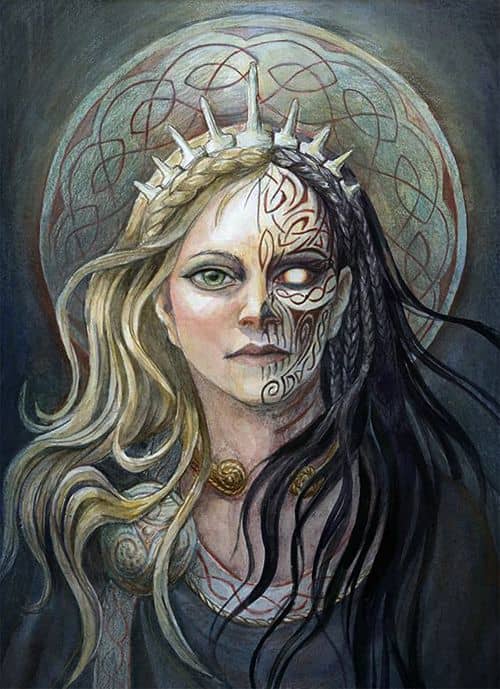
We tend to associate hell with the realm of eternal damnation. Well, its Germanic counterpart was no walk in the park either, with inhabitants like Fenrir the Wolf, Jörmungandr the Serpent, and other subjects who had died through sickness and old age.
The eponymous Hel was the ruler of this Norse underworld (also called Helheim). She was the daughter of Loki and the giant Angrboda. And it fell upon her to judge and decide the fate of the souls who entered her realm.
Descriptions of Hel, the being, have been found in numerous Viking sagas and poems; and most of them portray her as being partly decomposed with the face and body of a living woman (albeit with a gloomy, downcast appearance), but with thighs and legs of a corpse.
Still, among the Norse deities, she was said to be most powerful, even more than Odin himself, inside her own realm the Hel. The tragic episode of Balder’s death confirms such an association with power since it ultimately falls upon Hel to decide the fate of the soul of a god who was considered the wisest and most pure of all the Norse gods of Æsir.
Heimdall – The Vigilant Guardian of Asgard
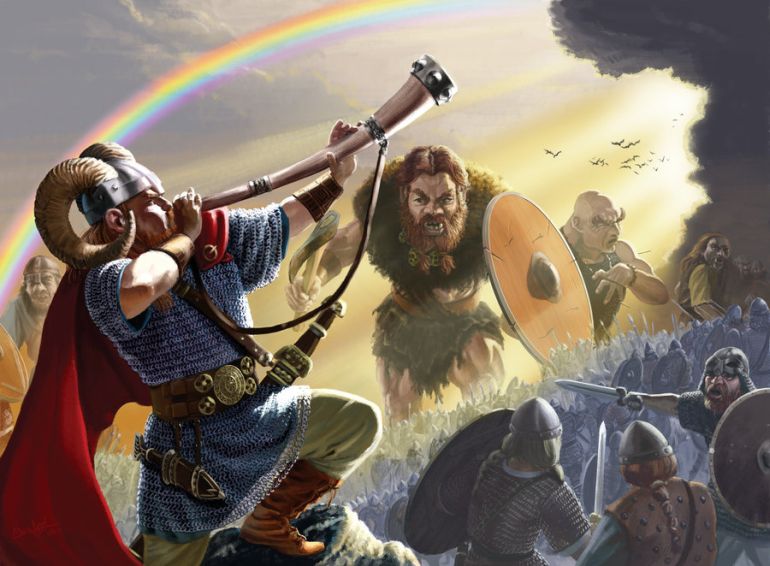
Heimdall (or Heimdallr in Old Norse) was often portrayed as the ever-vigilant guardian of Asgard, the stronghold of the Æsir Norse gods. He was also hailed as the descendant of giant Fornjót, and the grandson of sea jötunn (singular of jötnar) Ægir. He is often depicted with his horn Gjallarhorn (‘Resounding Horn’), which is put to use when intruders approach the home of the Æsir tribe of gods.
Pertaining to this ‘guarding’ duty, Heimdall is attested to possess keen eyesight (that stretches to hundreds of miles) and hearing (that even encompasses the sound of wool growing on the sheep). The vigilant deity also has other qualities like having foreknowledge and vast sources of energy (that allow him to sleep less than a bird).
Interestingly enough, there is a possibility that Heimdallr was once considered to be the father of humankind, as vaguely mentioned in the Old Norse poem Völuspá. It is also probable that most Vikings historically perceived Heimdall as being responsible for creating the hierarchy and classes among men.
In any case, reverting to mythology, Heimdall also plays an important role in the impending Ragnarok, where he will sound the dire call of Gjallarhorn to signal the arrival of the giants and monsters. And in the consequent confrontations, Loki and Heimdall are foretold to slay one another.
Njord – The God of Seas and Wealth
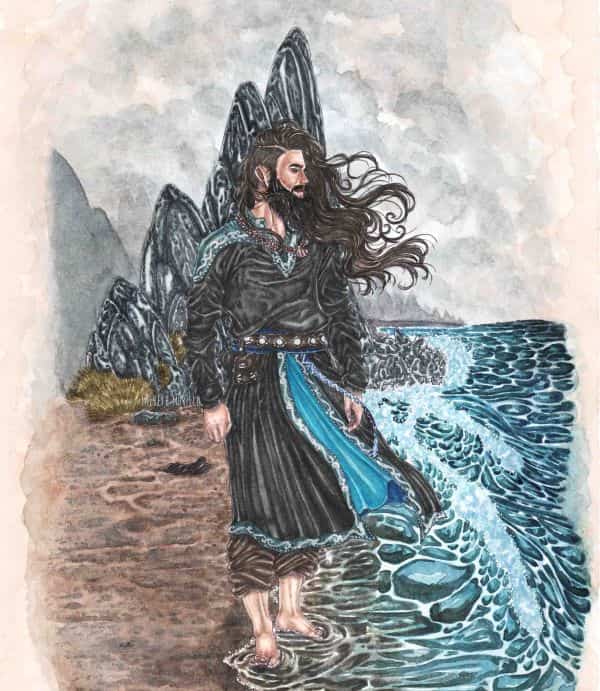
Njord (or Njörðr in Old Norse), belonged to the Vanir branch of Norse gods but was later accepted as an honorary member of the Aesir after the conclusion of their war. In the mythical narrative, Njord (pronounced as Nyord) was the god of the sea, while being also associated with both wealth and fertility.
Suffice it to say, given his ‘powers’, the Vikings especially revered him as the principal deity of seafaring. Germanic people may have also perceived him as the ‘richest’ divine being among all the Norse gods and goddesses.
As for the primary myth of Njord, the lore relates to the marriage of the sea god with the giantess Skadi. Interestingly enough, Skadi marries Njord after being enticed by his beautiful feet (which she mistakenly identified as that of Baldur – the Norse god of youth).
However, domestic life was not that blissful for the unlikely couple, with Skadi preferring to spend their time in her home in the snowy mountains, while Njord preferring it at Nóatún (“The Place of Ships”), his heavenly abode.
Expectedly, the couple parted ways after some time, but not before giving birth to the twins Freyr and Freya (discussed in the next entries)- two major Norse deities in their own right.
Freyr – The God of Fertility
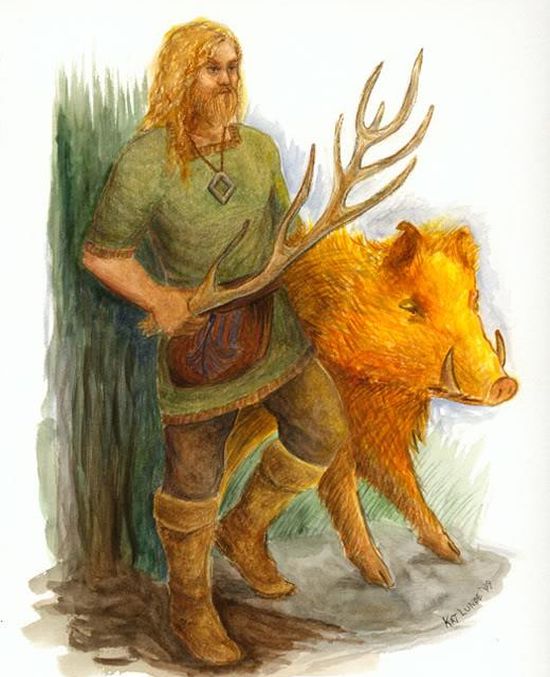
Freyr (along with his twin sister Freya), the son of sea-god Njord (and frost giantess, Skadi or Njord’s unnamed sister), was one of the most venerated and beloved of the Norse fertility gods. Unique in his origins, since he belonged to the Vanir tribe of Norse gods, as opposed to the Æsir, Freyr was depicted as a brawny man with flowing hair.
He, among many gods, was also hailed as the foremost deity when it came to the aspect of fertility – covering both sexual and ecological scopes. Simply put, the god embodied bountiful harvests, wealth, peace, and possibly even virility – all symbolized by Freyr’s boar Gullinborsti (‘Golden-Bristled’).
Given his association with such important avenues, Freyr was the favored god of reverence and worship when it came to marriage rites and harvest celebrations. The preferred sacrifice in these cases often involved the boar, the animal symbolically linked to the fertility god.
In that regard, in Norse mythology, Freyr was also known to travel in his chariot pulled by boars – and this was enacted by ancient historical processions of Germanic priests who went around in chariots (containing Freyr’s statue) to typify the coming of peace and prosperity in various regions of Germania.
Interestingly enough, Freyr was also associated with the elves, since his residence pertained to Alfheim, the homeland of the elves. In that regard, some scholars have hypothesized that Freyr was possibly even regarded as the king of elves with immense riches – although such conjecture is not well established in the Norse lore and actual historical sources.
Moreover, Freyr also boasted his ship, Skíðblaðnir, which had the enviable capacity to always have a favorable wind, while also showcasing its ‘modular’ design that allowed the craft to be folded into a tiny package.
Freya – The Goddess of Fate and Destiny
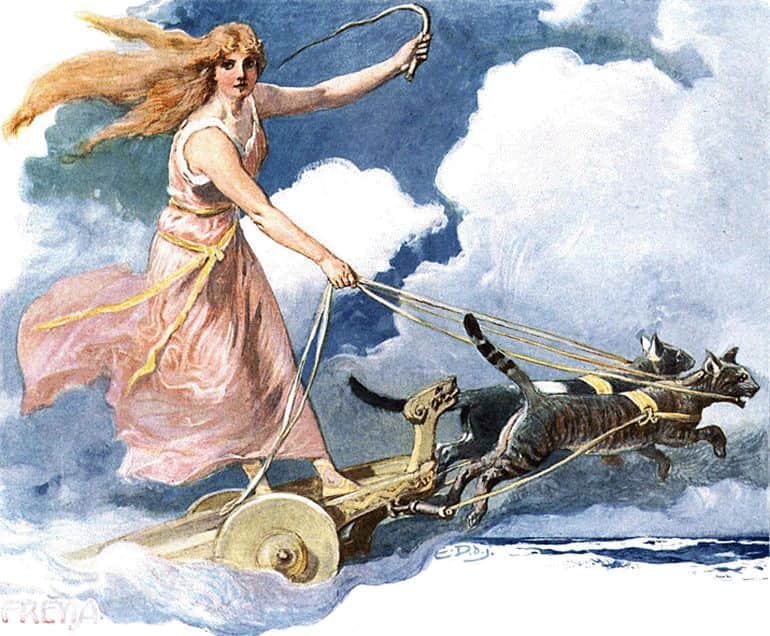
Freya (Freyja in Old Norse, meaning ‘Lady’), though initially belonging to the Vanir tribe of Norse gods (like his twin brother Freyr), was also a loyal and honorary member of the Æsir, after the conclusion of their tribal war.
Epitomizing the aspects of love, beauty, and even opulent objects, the goddess was often represented as the seeker of pleasure and the unknown. Focusing on the latter, Freya embodied the völva (or anglicized vala), the female seer of the Norse religion who had the ability to tinker with the seidr – magic pertaining to destiny and its ‘weaving’.
In essence, Freya had the ability to alter and manipulate one’s desire and fortune – and thus was often associated with the attitudes of cats. Freya was also regarded among the Norse goddesses as the ruler of the afterlife realm Folkvang, which allowed her to choose half of the warriors who were slain in battle (the other half were guided by the Valkyries to Valhalla – see the Bragi entry).
All of these characteristics of a potent völva mirror the historical scenario of the Germanic pantheon, especially during the Völkerwanderung or ‘Migration Period’ – circa 400-800 AD. In that regard, these tribal societies tended to favor two gods at the head of their pantheon symbolizing the chieftain warrior (who would lead them into battles and plunders) and his wife the prophetess (who would outline the future outcome of such military encounters by her magic).
Many historians and scholars believe that these two figures eventually coalesced into what we know as the Norse entities of Odin and Frigg, with the latter being the same (or at least sharing similar qualities to the) deity who was regarded as Freya.
To that end, Freya’s husband is often identified as Óðr, roughly meaning – furor or ecstasy. And Óðinn – the Old Norse for Odin, is just the word óðr with the masculine definite article (-inn) added to the end.
The Family Tree of Norse Gods and Goddesses

And in case we have not attributed or misattributed any image, artwork, or photograph, we apologize in advance. Please let us know via the ‘Contact Us’ link, provided both above the top bar and at the bottom bar of the page.
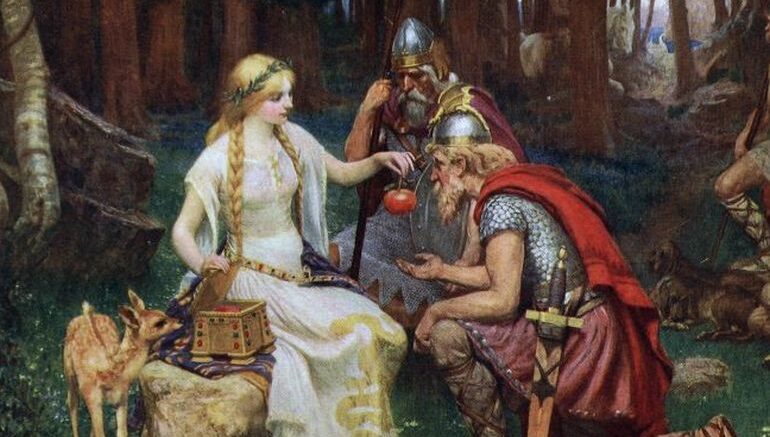
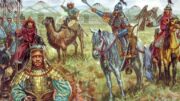

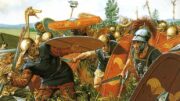
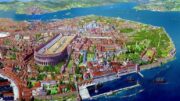
Be the first to comment on "The Most Powerful Norse Gods and Goddesses"